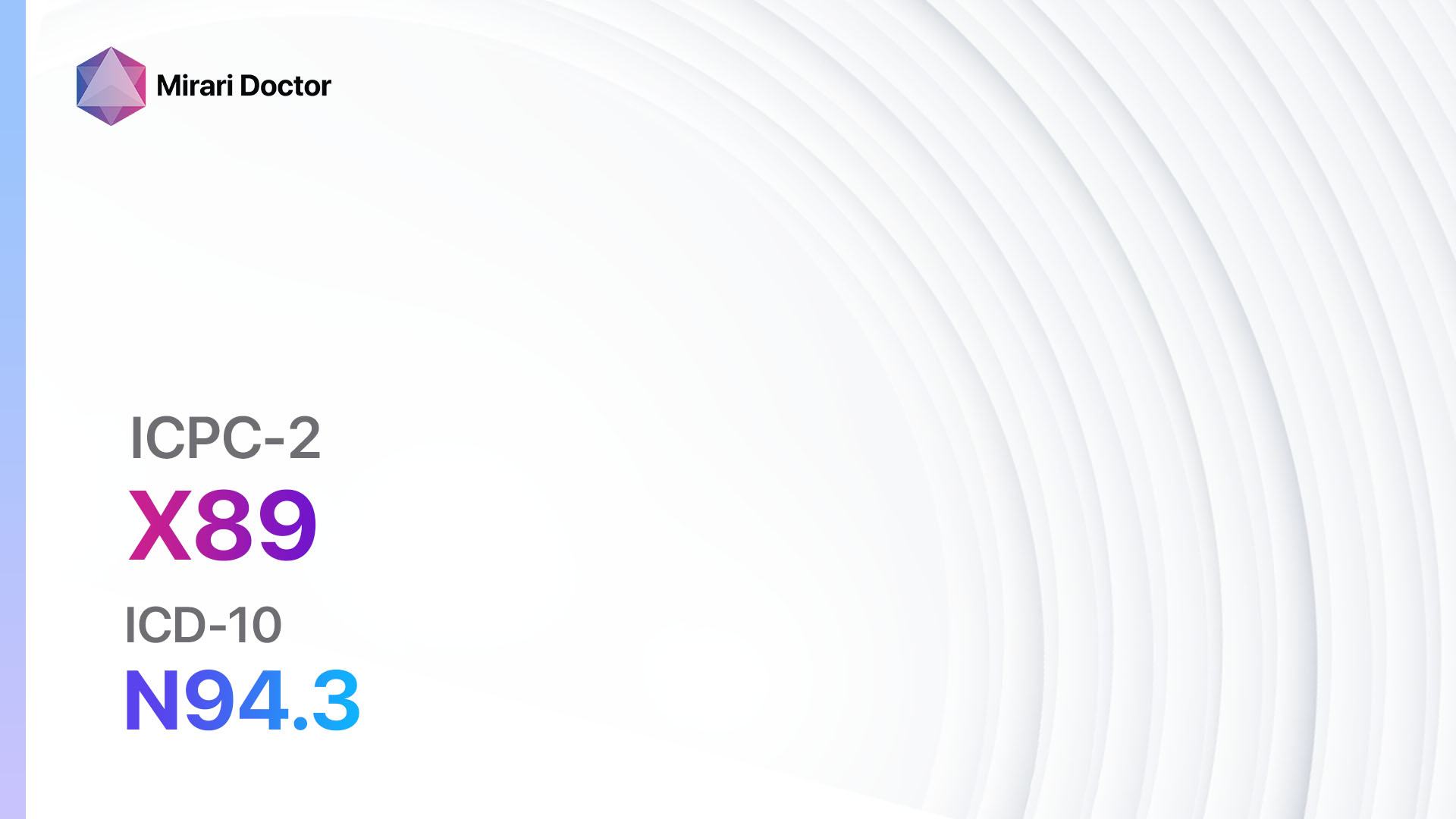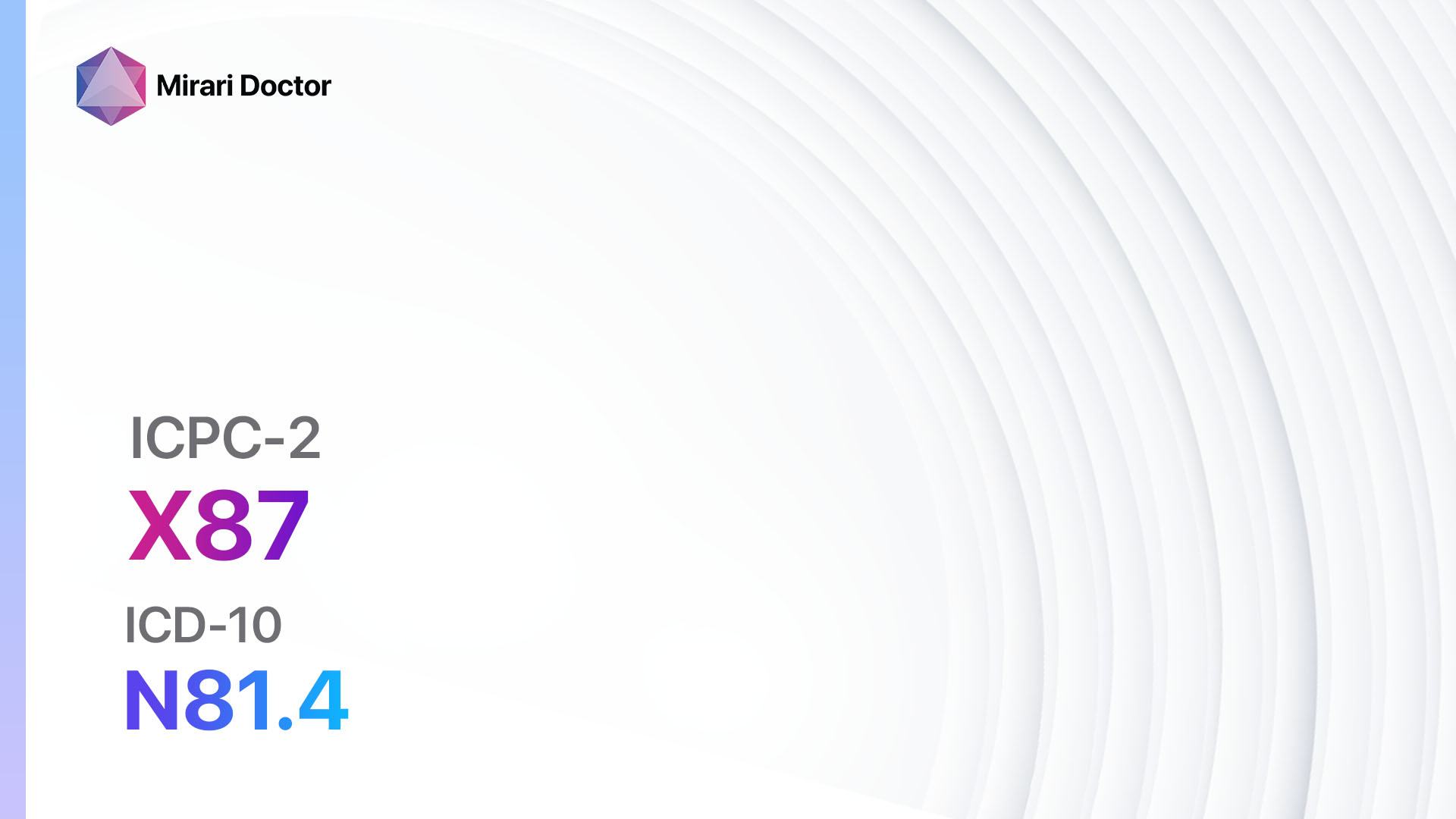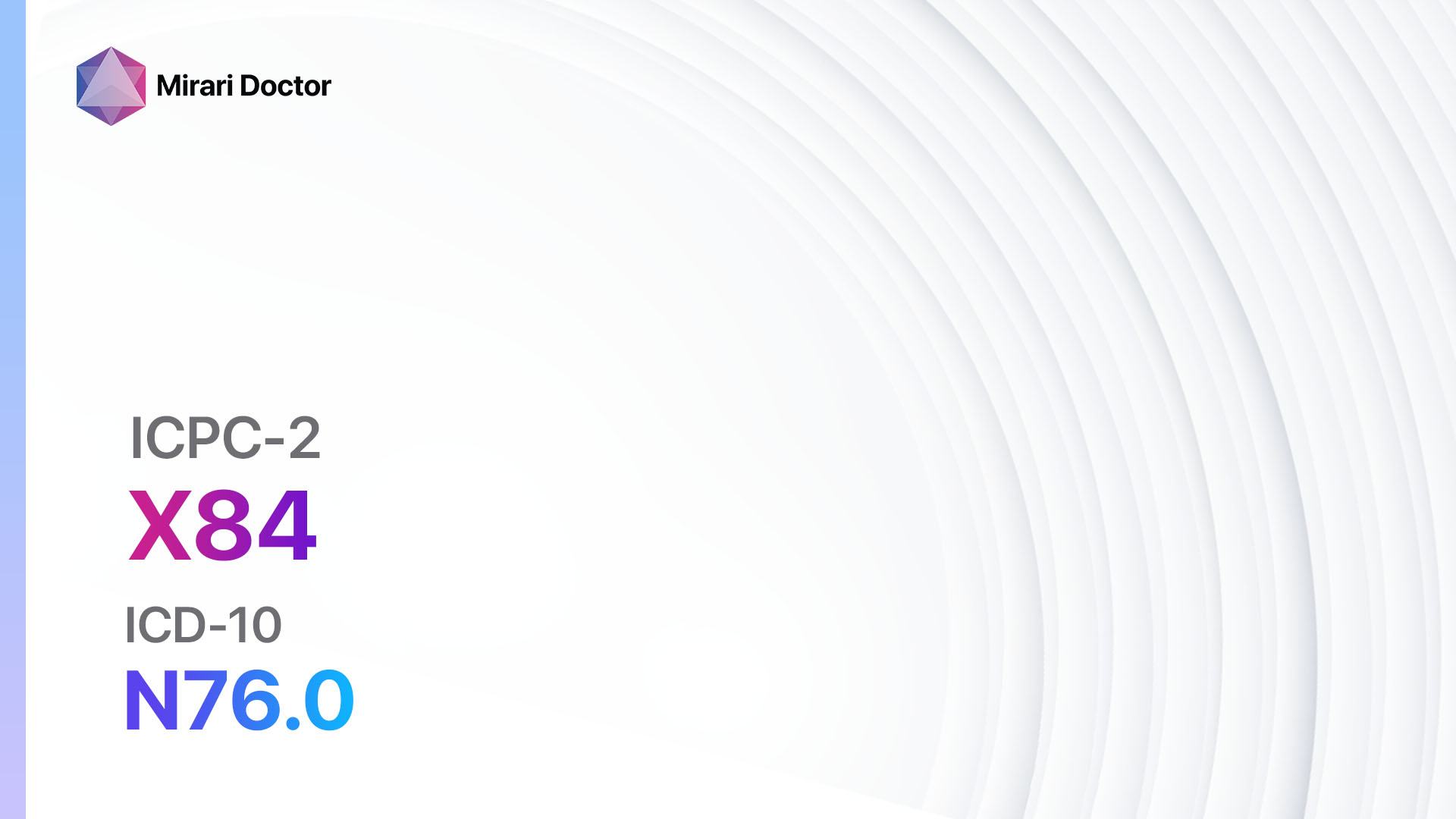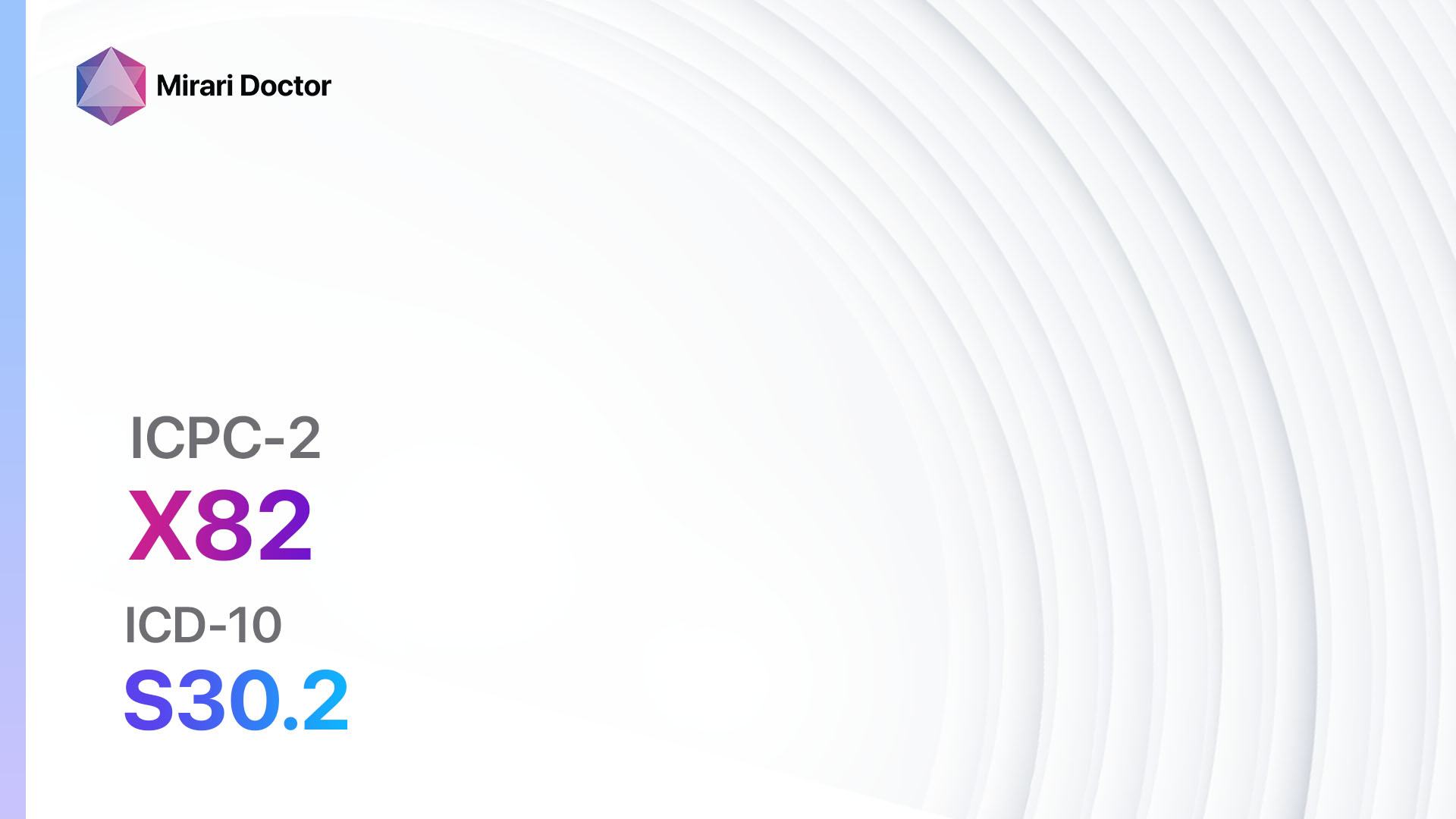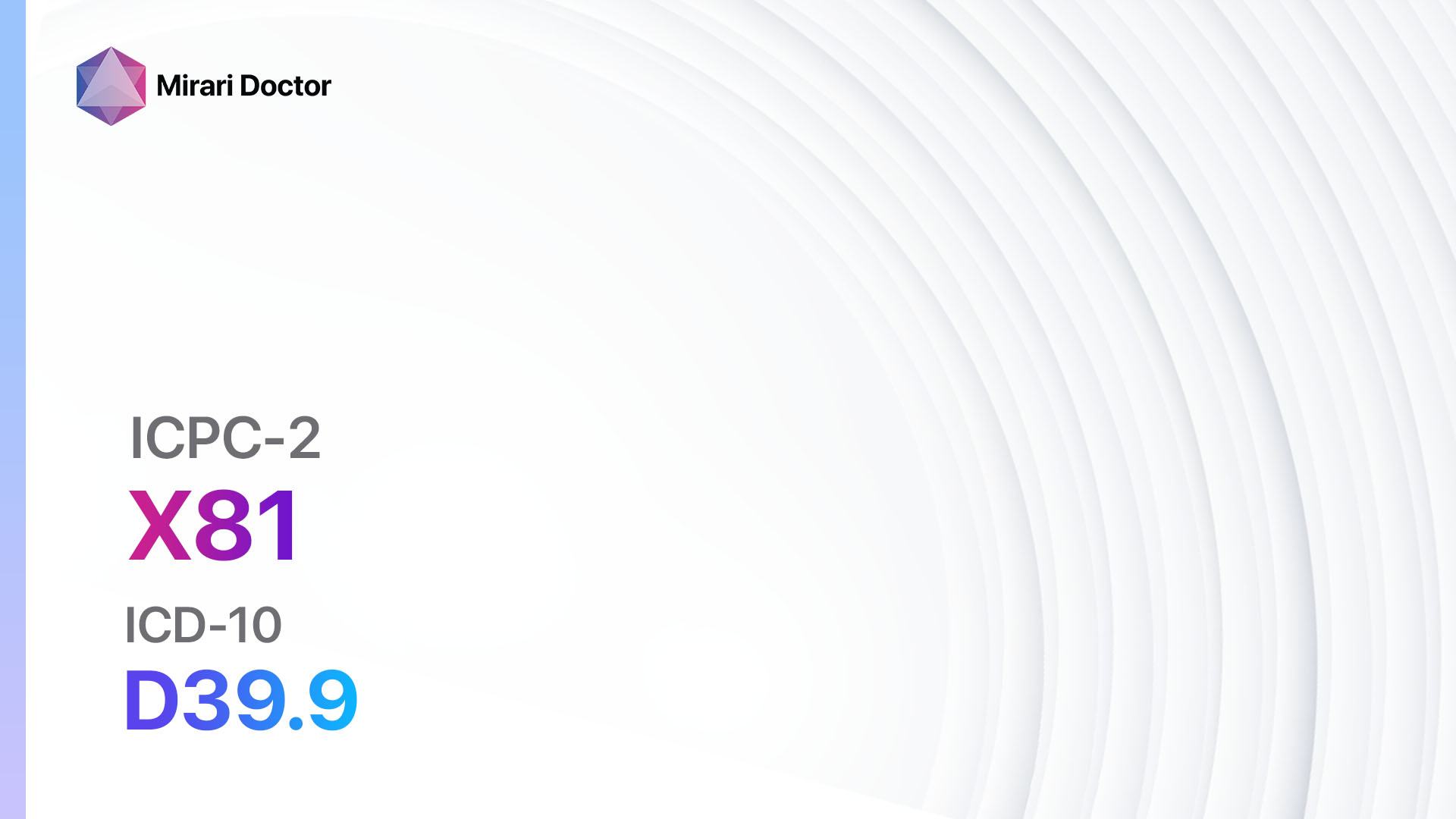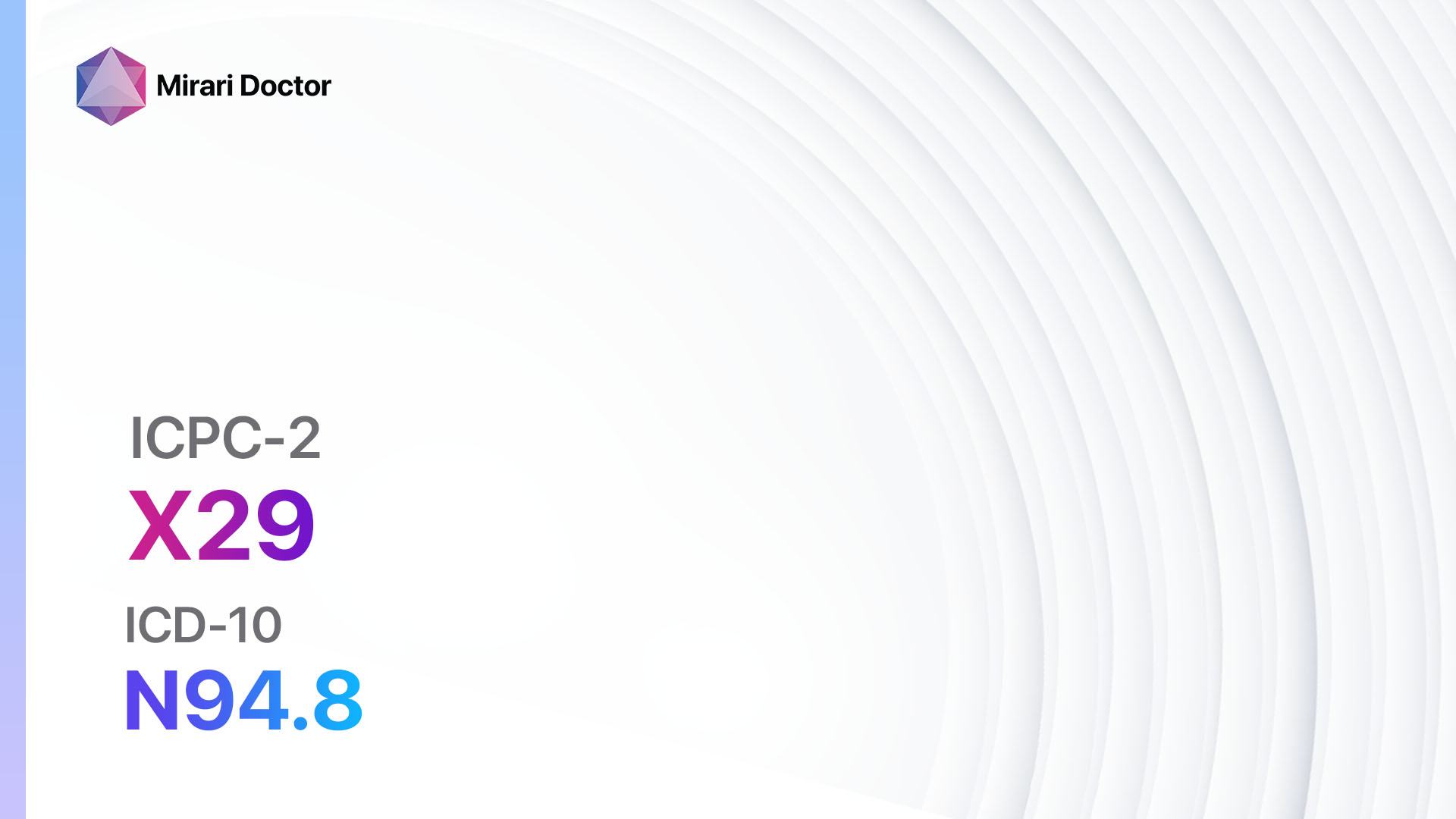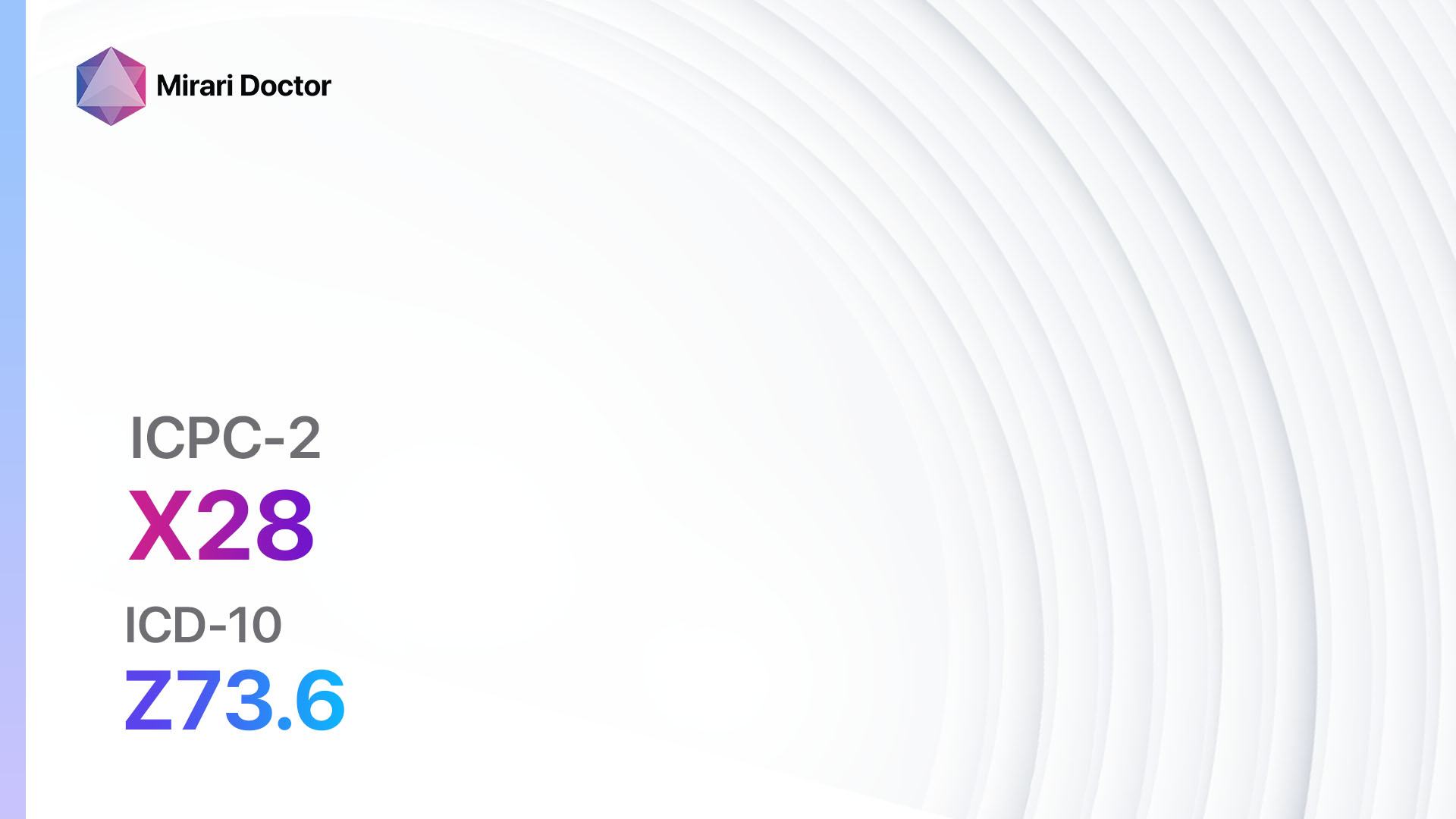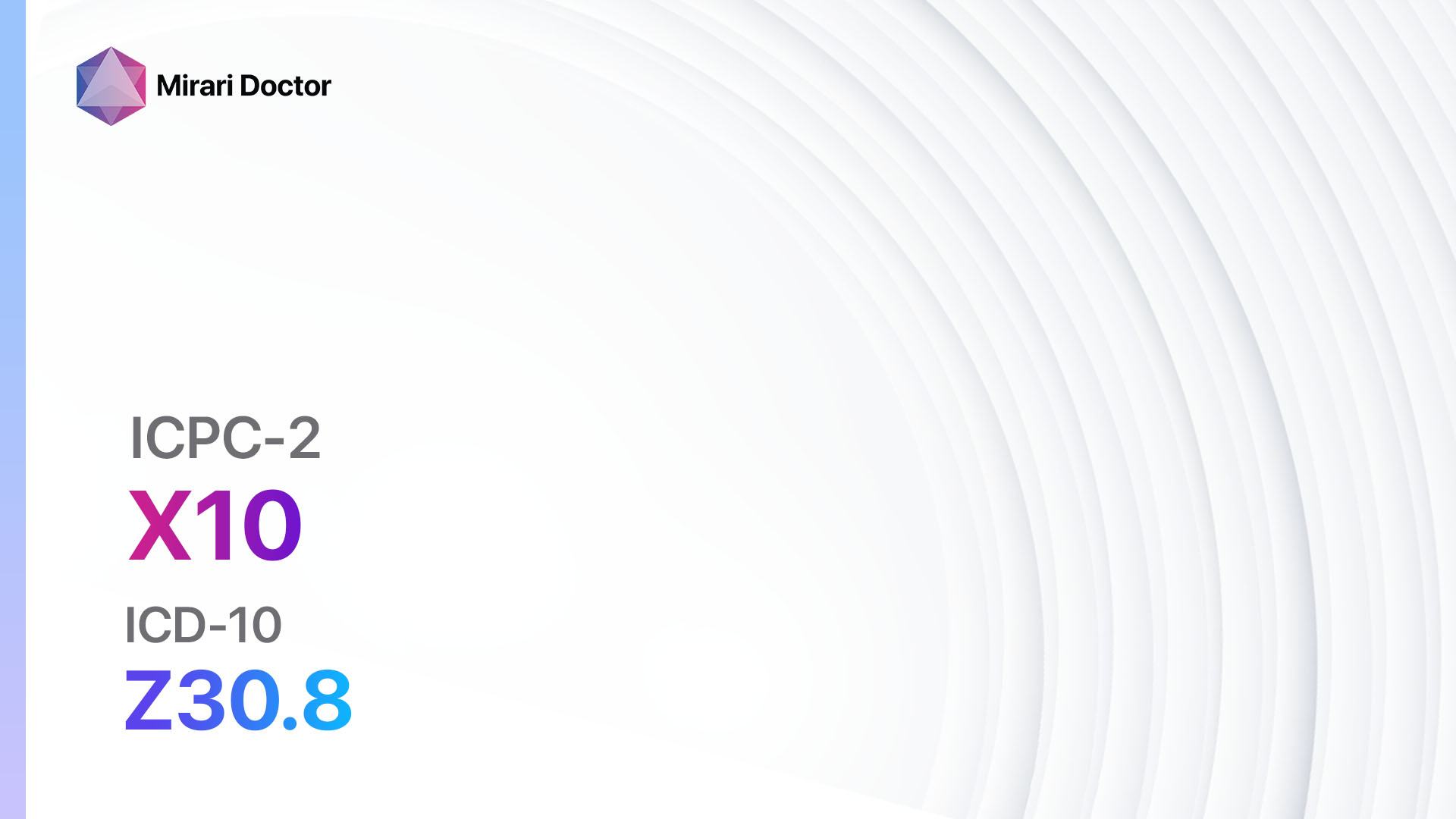
Introduction
Postponement of menstruation, also known as menstrual suppression, refers to the intentional delay or prevention of menstrual bleeding. This can be achieved through various interventions, including medications, alternative therapies, and lifestyle changes[1]. The aim of this guide is to provide an overview of the symptoms, causes, diagnostic steps, and possible interventions for the postponement of menstruation.
Codes
Symptoms
- Absence of menstrual bleeding
- Lighter or shorter periods
- Irregular menstrual cycles[2]
Causes
- Hormonal contraception: Certain forms of hormonal contraception, such as birth control pills, patches, or intrauterine devices (IUDs), can be used to suppress menstruation[3].
- Medical conditions: Certain medical conditions, such as polycystic ovary syndrome (PCOS) or uterine fibroids, may cause irregular or heavy menstrual bleeding, which can be managed through menstrual suppression[4].
- Personal preference: Some individuals may choose to postpone menstruation for personal or lifestyle reasons, such as avoiding menstrual symptoms or inconvenience during special events or vacations[5].
Diagnostic Steps
Medical History
- Gather information about the patient’s menstrual history, including regularity, duration, and associated symptoms.
- Inquire about any underlying medical conditions or use of hormonal contraception.
- Assess the patient’s personal preferences and reasons for seeking menstrual suppression[6].
Physical Examination
- Perform a general physical examination to assess overall health.
- Conduct a pelvic examination to evaluate the reproductive organs and identify any abnormalities[7].
Laboratory Tests
- Hormone levels: Measure levels of hormones, such as estrogen, progesterone, and follicle-stimulating hormone (FSH), to assess hormonal balance and identify any underlying hormonal imbalances.
- Blood count: Check for anemia or other blood disorders that may be contributing to menstrual irregularities.
- Thyroid function tests: Evaluate thyroid function, as thyroid disorders can affect menstrual cycles[8].
Diagnostic Imaging
- Transvaginal ultrasound: Use ultrasound imaging to visualize the reproductive organs and identify any structural abnormalities, such as uterine fibroids or ovarian cysts[9].
Other Tests
- Endometrial biopsy: If there are concerns about abnormal uterine bleeding, an endometrial biopsy may be performed to evaluate the uterine lining for any abnormalities[10].
Follow-up and Patient Education
- Schedule follow-up appointments to monitor the effectiveness of the chosen intervention and address any concerns or side effects.
- Provide patient education on the chosen method of menstrual suppression, including instructions for use, potential side effects, and when to seek medical attention[1][5].
Possible Interventions
Traditional Interventions
Medications:
Top 5 drugs for Postponement of Menstruation:
- Combined oral contraceptives (e.g., Ethinyl estradiol and levonorgestrel):
- Cost: Generic versions can range from $10 to $50 per month.
- Contraindications: History of blood clots, certain types of cancer, uncontrolled high blood pressure.
- Side effects: Nausea, breast tenderness, breakthrough bleeding.
- Severe side effects: Blood clots, stroke, heart attack.
- Drug interactions: Certain antibiotics, anticonvulsants.
- Warning: Increased risk of blood clots in women over 35 who smoke.
- Progestin-only contraceptives (e.g., Norethindrone):
- Cost: Generic versions can range from $10 to $50 per month.
- Contraindications: History of blood clots, certain types of cancer, unexplained vaginal bleeding.
- Side effects: Irregular bleeding, mood changes, weight gain.
- Severe side effects: Blood clots, liver problems.
- Drug interactions: Certain antibiotics, anticonvulsants.
- Warning: Must be taken at the same time every day for maximum effectiveness.
- Medroxyprogesterone acetate (Depo-Provera):
- Cost: $30 to $100 per injection (lasts for 3 months).
- Contraindications: History of blood clots, certain types of cancer, unexplained vaginal bleeding.
- Side effects: Irregular bleeding, weight gain, mood changes.
- Severe side effects: Bone loss, decreased fertility after discontinuation.
- Drug interactions: None significant.
- Warning: May cause a delay in return to fertility after discontinuation.
- Levonorgestrel-releasing intrauterine device (Mirena):
- Cost: $500 to $1,000 (lasts for 5 years).
- Contraindications: Current pelvic infection, certain types of cancer, unexplained vaginal bleeding.
- Side effects: Irregular bleeding, cramping, acne.
- Severe side effects: Perforation of the uterus, infection.
- Drug interactions: None significant.
- Warning: May cause expulsion or migration of the device.
- Gonadotropin-releasing hormone (GnRH) agonists (e.g., Leuprolide):
- Cost: $500 to $1,000 per injection (lasts for 1 to 3 months).
- Contraindications: Pregnancy, certain types of cancer, severe liver disease.
- Side effects: Menopausal symptoms (hot flashes, vaginal dryness), decreased bone density.
- Severe side effects: None significant.
- Drug interactions: None significant.
- Warning: Long-term use may cause bone loss.
Alternative Drugs:
- Norethisterone: A progestin that can be taken for a specific duration to delay menstruation.
- Tranexamic acid: A medication that reduces heavy menstrual bleeding.
- Selective serotonin reuptake inhibitors (SSRIs): Some SSRIs, such as fluoxetine, may help reduce premenstrual symptoms and regulate menstrual cycles.
- Nonsteroidal anti-inflammatory drugs (NSAIDs): NSAIDs, such as ibuprofen, can help reduce menstrual pain and bleeding.
Surgical Procedures:
- Endometrial ablation: A procedure that destroys the uterine lining to reduce or eliminate menstrual bleeding. Cost: $5,000 to $10,000.
- Hysterectomy: Surgical removal of the uterus, which permanently stops menstruation. Cost: $10,000 to $20,000.
Alternative Interventions
- Herbal supplements: Certain herbs, such as chasteberry or dong quai, are believed to have menstrual-regulating properties. Cost: Varies depending on the specific supplement.
- Acupuncture: May help regulate menstrual cycles and reduce menstrual pain. Cost: $60 to $120 per session.
- Yoga and meditation: Stress reduction techniques can help manage menstrual symptoms and promote hormonal balance. Cost: Varies depending on the class or instructor.
- Dietary changes: Consuming a balanced diet rich in fruits, vegetables, and whole grains may help regulate menstrual cycles. Cost: Varies depending on individual food choices.
Lifestyle Interventions
- Exercise: Regular physical activity can help regulate menstrual cycles and reduce menstrual symptoms. Cost: Varies depending on the chosen activity (e.g., gym membership, fitness classes).
- Stress management: Engaging in stress-reducing activities, such as mindfulness or relaxation techniques, can help regulate menstrual cycles. Cost: Varies depending on the chosen activity or program.
- Sleep hygiene: Maintaining a regular sleep schedule and practicing good sleep habits can help regulate hormonal balance. Cost: None.
- Weight management: Achieving and maintaining a healthy weight can help regulate menstrual cycles. Cost: Varies depending on individual choices and preferences.
It is important to note that the cost ranges provided are approximate and may vary depending on the location and availability of the interventions. It is recommended to consult with a healthcare professional to determine the most suitable intervention based on individual needs and preferences.
Mirari Cold Plasma Alternative Intervention
Understanding Mirari Cold Plasma
- Safe and Non-Invasive Treatment: Mirari Cold Plasma is a safe and non-invasive treatment option for various skin conditions. It does not require incisions, minimizing the risk of scarring, bleeding, or tissue damage.
- Efficient Extraction of Foreign Bodies: Mirari Cold Plasma facilitates the removal of foreign bodies from the skin by degrading and dissociating organic matter, allowing easier access and extraction.
- Pain Reduction and Comfort: Mirari Cold Plasma has a local analgesic effect, providing pain relief during the treatment, making it more comfortable for the patient.
- Reduced Risk of Infection: Mirari Cold Plasma has antimicrobial properties, effectively killing bacteria and reducing the risk of infection.
- Accelerated Healing and Minimal Scarring: Mirari Cold Plasma stimulates wound healing and tissue regeneration, reducing healing time and minimizing the formation of scars.
Mirari Cold Plasma Prescription
Video instructions for using Mirari Cold Plasma Device – X10 Postponement of menstruation (ICD-10:Z30.8)
| Mild | Moderate | Severe |
| Mode setting: 2 (Wound Healing) Location: 2 (Prostate & Uterus) Morning: 15 minutes, Evening: 15 minutes |
Mode setting: 2 (Wound Healing) Location: 2 (Prostate & Uterus) Morning: 30 minutes, Lunch: 30 minutes, Evening: 30 minutes |
Mode setting: 2 (Wound Healing) Location: 2 (Prostate & Uterus) Morning: 30 minutes, Lunch: 30 minutes, Evening: 30 minutes |
| Mode setting: 7 (Immunotherapy) Location: 1 (Sacrum) Morning: 15 minutes, Evening: 15 minutes |
Mode setting: 7 (Immunotherapy) Location: 1 (Sacrum) Morning: 30 minutes, Lunch: 30 minutes, Evening: 30 minutes |
Mode setting: 7 (Immunotherapy) Location: 1 (Sacrum) Morning: 30 minutes, Lunch: 30 minutes, Evening: 30 minutes |
| Total Morning: 30 minutes approx. $5 USD, Evening: 30 minutes approx. $5 USD |
Total Morning: 60 minutes approx. $10 USD, Lunch: 60 minutes approx. $10 USD, Evening: 60 minutes approx. $10 USD, |
Total Morning: 60 minutes approx. $10 USD, Lunch: 60 minutes approx. $10 USD, Evening: 60 minutes approx. $10 USD, |
| Usual treatment for 7-60 days approx. $70 USD – $600 USD | Usual treatment for 6-8 weeks approx. $1,260 USD – $1,680 USD |
Usual treatment for 3-6 months approx. $2,700 USD – $5,400 USD
|
 |
|
Use the Mirari Cold Plasma device to treat Postponement of menstruation effectively.
WARNING: MIRARI COLD PLASMA IS DESIGNED FOR THE HUMAN BODY WITHOUT ANY ARTIFICIAL OR THIRD PARTY PRODUCTS. USE OF OTHER PRODUCTS IN COMBINATION WITH MIRARI COLD PLASMA MAY CAUSE UNPREDICTABLE EFFECTS, HARM OR INJURY. PLEASE CONSULT A MEDICAL PROFESSIONAL BEFORE COMBINING ANY OTHER PRODUCTS WITH USE OF MIRARI.
Step 1: Cleanse the Skin
- Start by cleaning the affected area of the skin with a gentle cleanser or mild soap and water. Gently pat the area dry with a clean towel.
Step 2: Prepare the Mirari Cold Plasma device
- Ensure that the Mirari Cold Plasma device is fully charged or has fresh batteries as per the manufacturer’s instructions. Make sure the device is clean and in good working condition.
- Switch on the Mirari device using the power button or by following the specific instructions provided with the device.
- Some Mirari devices may have adjustable settings for intensity or treatment duration. Follow the manufacturer’s instructions to select the appropriate settings based on your needs and the recommended guidelines.
Step 3: Apply the Device
- Place the Mirari device in direct contact with the affected area of the skin. Gently glide or hold the device over the skin surface, ensuring even coverage of the area experiencing.
- Slowly move the Mirari device in a circular motion or follow a specific pattern as indicated in the user manual. This helps ensure thorough treatment coverage.
Step 4: Monitor and Assess:
- Keep track of your progress and evaluate the effectiveness of the Mirari device in managing your Postponement of menstruation. If you have any concerns or notice any adverse reactions, consult with your health care professional.
Note
This guide is for informational purposes only and should not replace the advice of a medical professional. Always consult with your healthcare provider or a qualified medical professional for personal advice, diagnosis, or treatment. Do not solely rely on the information presented here for decisions about your health. Use of this information is at your own risk. The authors of this guide, nor any associated entities or platforms, are not responsible for any potential adverse effects or outcomes based on the content.
Mirari Cold Plasma System Disclaimer
- Purpose: The Mirari Cold Plasma System is a Class 2 medical device designed for use by trained healthcare professionals. It is registered for use in Thailand and Vietnam. It is not intended for use outside of these locations.
- Informational Use: The content and information provided with the device are for educational and informational purposes only. They are not a substitute for professional medical advice or care.
- Variable Outcomes: While the device is approved for specific uses, individual outcomes can differ. We do not assert or guarantee specific medical outcomes.
- Consultation: Prior to utilizing the device or making decisions based on its content, it is essential to consult with a Certified Mirari Tele-Therapist and your medical healthcare provider regarding specific protocols.
- Liability: By using this device, users are acknowledging and accepting all potential risks. Neither the manufacturer nor the distributor will be held accountable for any adverse reactions, injuries, or damages stemming from its use.
- Geographical Availability: This device has received approval for designated purposes by the Thai and Vietnam FDA. As of now, outside of Thailand and Vietnam, the Mirari Cold Plasma System is not available for purchase or use.
References
- American College of Obstetricians and Gynecologists. (2022). General Approaches to Medical Management of Menstrual Suppression. Retrieved from https://www.acog.org/clinical/clinical-guidance/clinical-consensus/articles/2022/09/general-approaches-to-medical-management-of-menstrual-suppression
- Mayo Clinic. (2021). Menstrual cycle: What’s normal, what’s not. Retrieved from https://www.mayoclinic.org/healthy-lifestyle/womens-health/in-depth/menstrual-cycle/art-20047186
- WebMD. (n.d.). Stop Your Period With Birth Control. Retrieved from https://www.webmd.com/sex/birth-control/birth-control-stop-period
- Baylor College of Medicine. (n.d.). Menstrual Disorders. Retrieved from https://www.bcm.edu/healthcare/specialties/obstetrics-and-gynecology/ob-gyn-conditions/menstrual-disorders
- GPnotebook. (n.d.). Postponing menstruation. Retrieved from https://gpnotebook.com/pages/gynaecology/postponing-menstruation
- The Pharmaceutical Journal. (n.d.). Questions on postponing menstruation. Retrieved from https://pharmaceutical-journal.com/article/ld/questions-on-postponing-menstruation
- National Health Service. (2021). Periods and fertility in the menstrual cycle. Retrieved from https://www.nhs.uk/conditions/periods/fertility-in-the-menstrual-cycle/
- Office on Women’s Health. (2021). Menstrual cycle. Retrieved from https://www.womenshealth.gov/menstrual-cycle
- Cleveland Clinic. (2022). Menstrual Cycle. Retrieved from https://my.clevelandclinic.org/health/articles/10132-menstrual-cycle
- American Family Physician. (2019). Evaluation and Management of Abnormal Uterine Bleeding. Retrieved from https://www.aafp.org/afp/2019/0401/p449.html
Related articles
Made in USA



